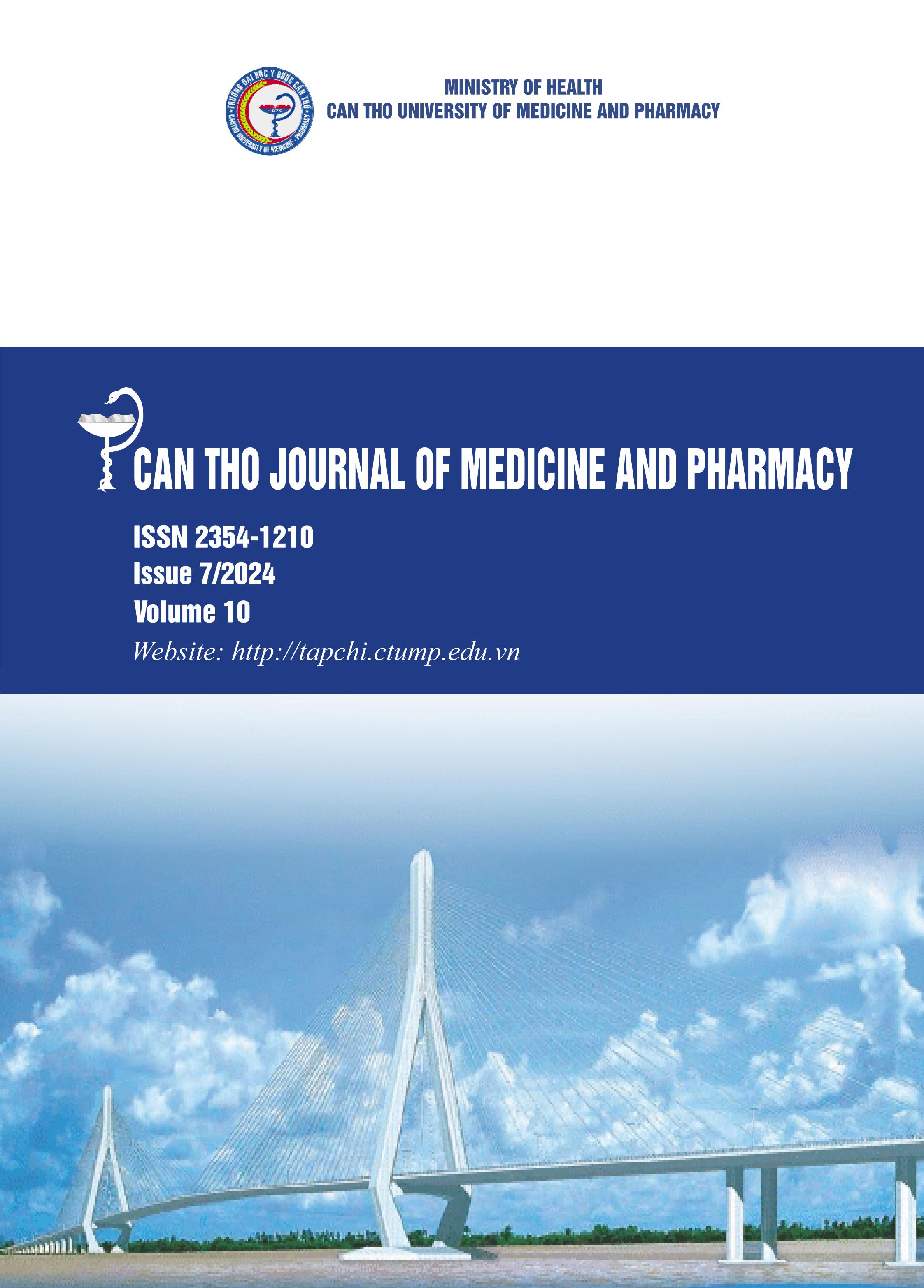HEALTHCARE STUDENTS' READINESS OF INTERPROFESSIONAL LEARNING IN CAN THO UNIVERSITY OF MEDICINE AND PHARMACY: A CROSS-SECTIONAL STUDY
Nội dung chính của bài viết
Tóm tắt
Background: The World Health Organization emphasizes the significance of interprofessional collaboration and education. Being aware of the value of collaboration among professionals within the healthcare team, the university in Vietnam has tended to prepare students for teamwork through interprofessional education. However, the success of interprofessional education is contingent upon the students' attitudes. Objectives: To identify students' attitudes at Can Tho University of Medicine and Pharmacy toward interprofessional learning and explore factors affecting their readiness for the program. Materials and methods: A cross-sectional study on 301 Can Tho University of Medicine and Pharmacy students in ten majors, responding to an online survey from May to July of 2023 using the Readiness for Interprofessional Learning Scale. Besides, we collected demographic information including age, gender, ethnicity, major, academic years, and info learned/experienced in the interprofessional education of students. Multivariate regression was used to explore factors affecting students' readiness for interprofessional learning. Results: Students replied to the questionnaire. All of them had no experience in interprofessional education (100%); almost all participants were Kinh ethnicity (91.7%), and female (72.8%). The average age was 19.9 ± 0.7 years old. Students studying in the 2nd year were 65.8%. Nursing students account for the highest proportion (21.3%). The total score on the 19item Readiness for Interprofessional Learning Scale rated by 301 students was 72.2 ± 8.2. The Positive professional identity subscale scored 4.1 ± 0.6 while the Teamwork and collaboration subscale scored 4.2 ± 0.5. The subscales measuring Negative professional identity and Roles and responsibilities had mean scores of 2.7 ± 1.1 and 3.4 ± 0.8, respectively. The study found an association between the subscale's score and the profession and ethnicity of students. Conclusion: Most students are ready for interprofessional learning, educators need to study how to build and introduce interprofessional education for them.
Chi tiết bài viết
Từ khóa
healthcare students, interprofessional education, collaboration, interprofessional collaboration, interprofessional attitude, medical education
Tài liệu tham khảo
2. Johnson SW, & Mathieson, K. The effects of demographics on physician assistant attitudes and openness towards interprofessional medical collaboration and education. Journal of Interprofessional Education & Practice. 2020. 19, 100333.
3. Williams B, McCook F, Browwn T, Palmero C, McKenna L, Boyle M, et al. Are Undergraduate Health Care Students "Ready" for Interprofessional Learning? A Cross-Sectional Attitudinal Study. The Internet Journal of Allied Health Sciences and Practice. 2012. 10(3).
4. Knieper MJ, Bhatti JL, Dc EJT. Perceptions of chiropractic students regarding interprofessional healthcare teams. The Journal of chiropractic education. 2022. 36(1), 30-6.
5. Nguyen Thi Kim Tuong. The influence of an IPE program on stereotypes of healthcare students about the role of healthcare workers. Editor: Master's thesis in Nursing. University of Pharmacy at Ho Chi Minh City. 2021.
6. Sharma A, Minh Duc NT. A Consensus-Based Checklist for Reporting of Survey Studies (CROSS). 2021. 36(10), 3179-87. doi: 10.1007/s11606-021-06737-1.
7. Potthoff M, Doll J, Maio A, Packard K. Measuring the impact of an online IPE course on team perceptions. Journal of interprofessional care. 2019, 1-4. doi: 10.1080/13561820.2019.1645647.
8. Alruwaili A MN, Alharthy N, Othman F. Students’ readiness for and perception of Interprofessional learning: a cross-sectional study. BMC medical education. 2020. 20(1), 390. doi: 10.1186/s12909-020-02325-9.
9. McFadyen AK, Webster VS, Maclaren WM. The test-retest reliability of a revised version of the Readiness for Interprofessional Learning Scale (RIPLS). Journal of interprofessional care. 2006. 20(6), 633-9. Epub 2006/11/11. doi: 10.1080/13561820600991181.
10. Nguyen TTK, Tran LTK, Duong KD, Tuan TD. How Vietnamese healthcare students think of nurses: Students stereotypes about Nursing at University of Medicine and Pharmacy at Ho Chi Minh City. MedPharmRes. 2022. 7(1), 39-46.
11. Huyen NTT, Tam NM, Wens J, Tsakitzidis G, Van Chi L, Anh L, et al. Comparison of students' readiness from six health education programs for interprofessional learning in Vietnam: a crosssectional study. BMC medical education. 2023. 23(1), 798. doi: 10.1186/s12909-023-04776-2.
12. An R, Wang J, Li S, Li N, Yin Y, Wang X. Relationship between readiness for interprofessional learning and academic self-efficacy among nursing students: a cross-sectional study. BMC medical education. 2024. 24(1), 62. doi: 10.1186/s12909-023-04953-3.
13. Al-Shaikh GK, Al-Madi EM, Masood J, Shaikh Q, Syed SB, Bader RS, et al. Interprofessional learning experiences: Exploring the perception and attitudes of Saudi Arabian medical and dental students. 2018. 40(1), S43-s8. doi: 10.1080/0142159x.2018.1465180.
14. Kukko P S-LM, Saaranen T. Health care students' perceptions about learning of affective interpersonal communication competence in interprofessional simulations. Nurse education today. 2020. 94, 104565. doi: 10.1016/j.nedt.2020.104565.


